Abstract
An indirect fluorescent-antibody test for detection and titration of antibodies to Ehrlichia canis, the causative agent of tropical canine pancytopenia, has been described. The organism propagated by an in vitro technique in canine blood monocytes served as an antigen in the test. The specificity of the test was revealed by absence of cross-reactivity between the antigen and sera from dogs infected with various common pathogens and specific sera against eight rickettsial species. The accuracy of the test was ascertained by isolation of the organism from reactor dogs located in and outside the United States. Histopathological examination of nine reactor dogs revealed plasmacytosis of meninges and kidneys in eight of them.
Full text
PDF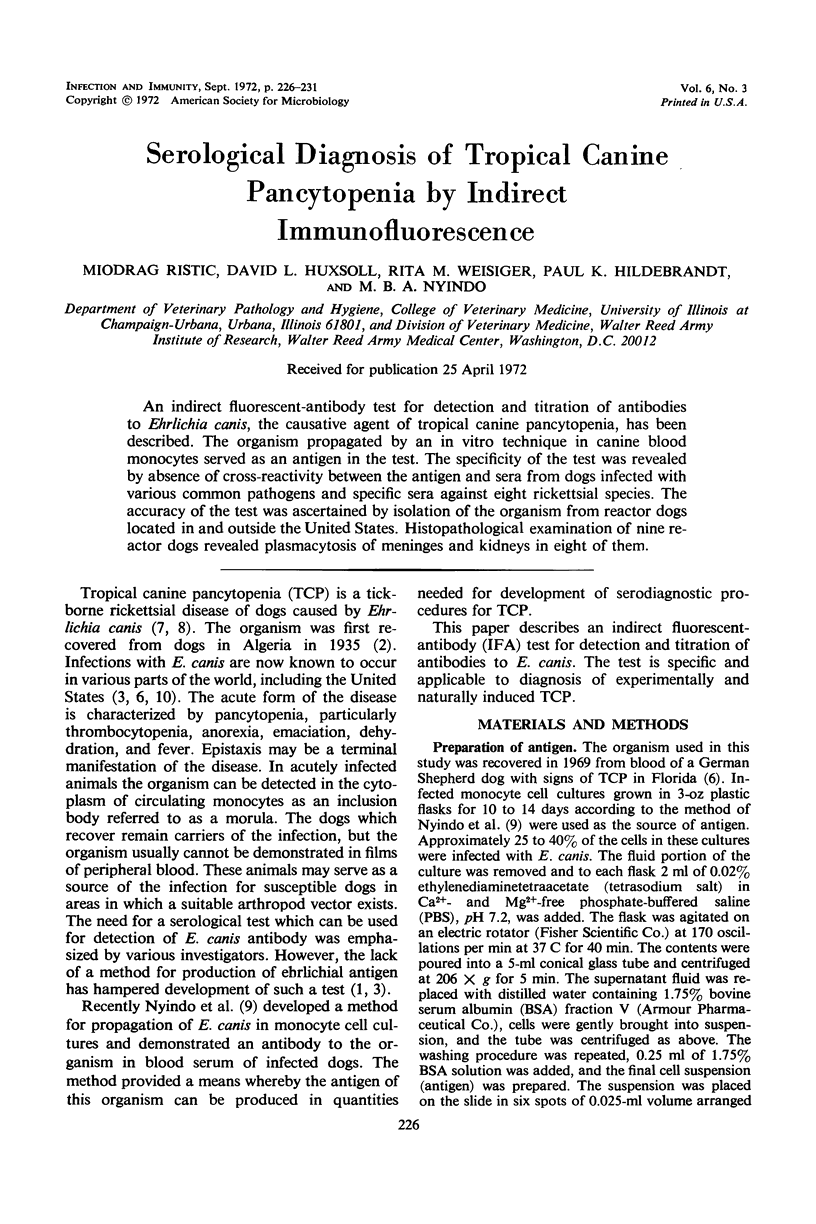
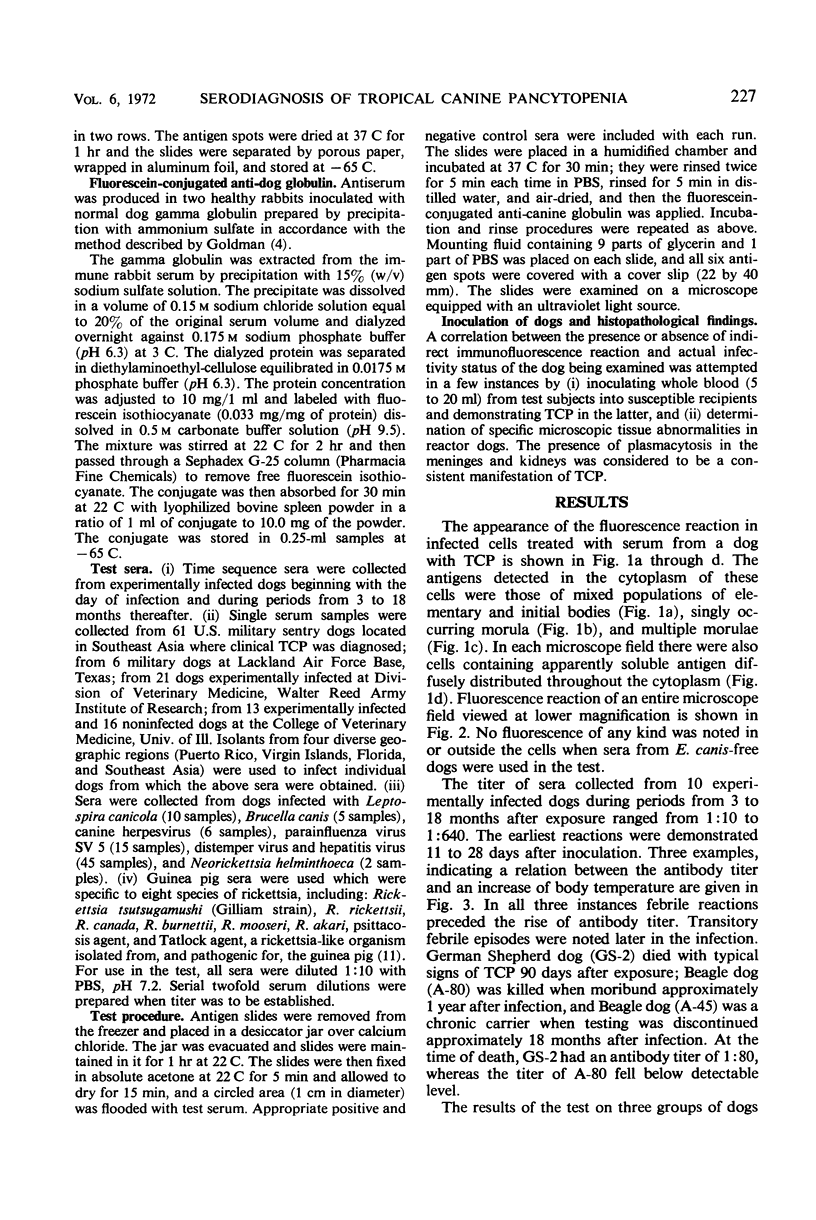
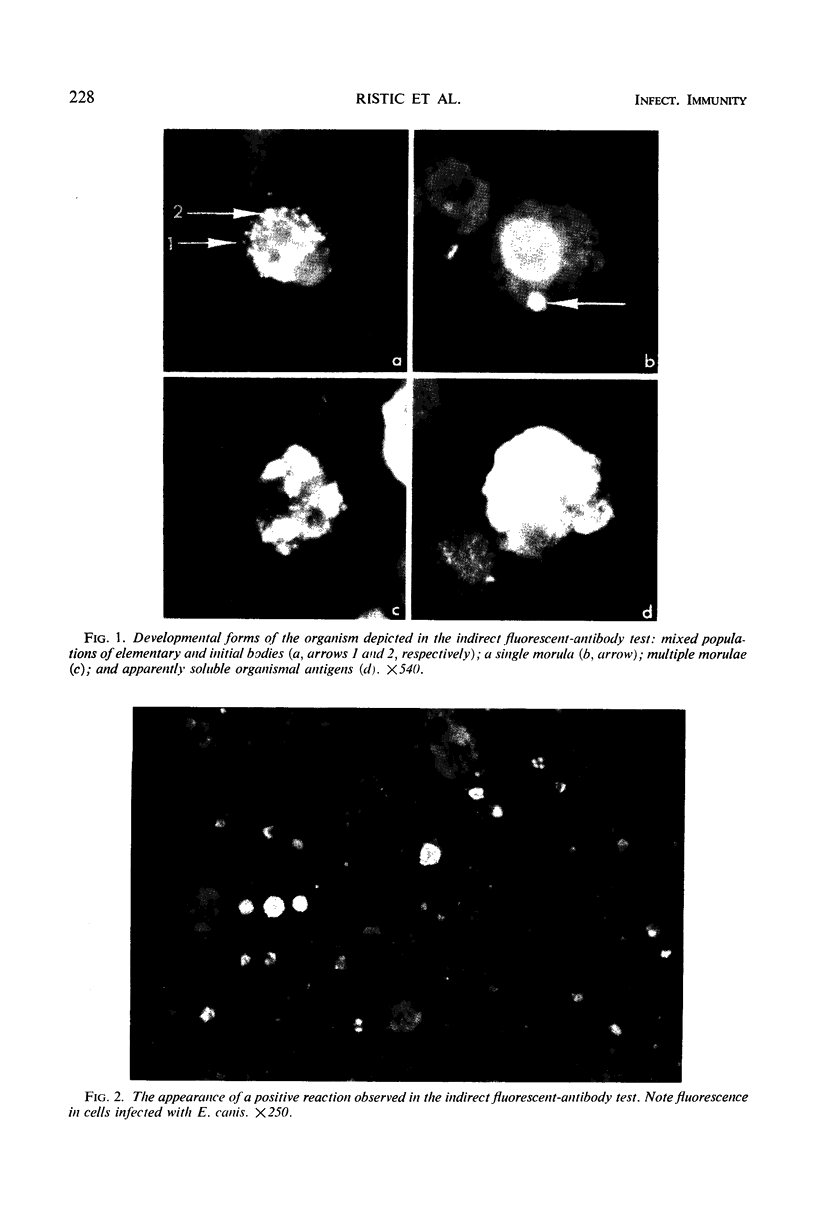
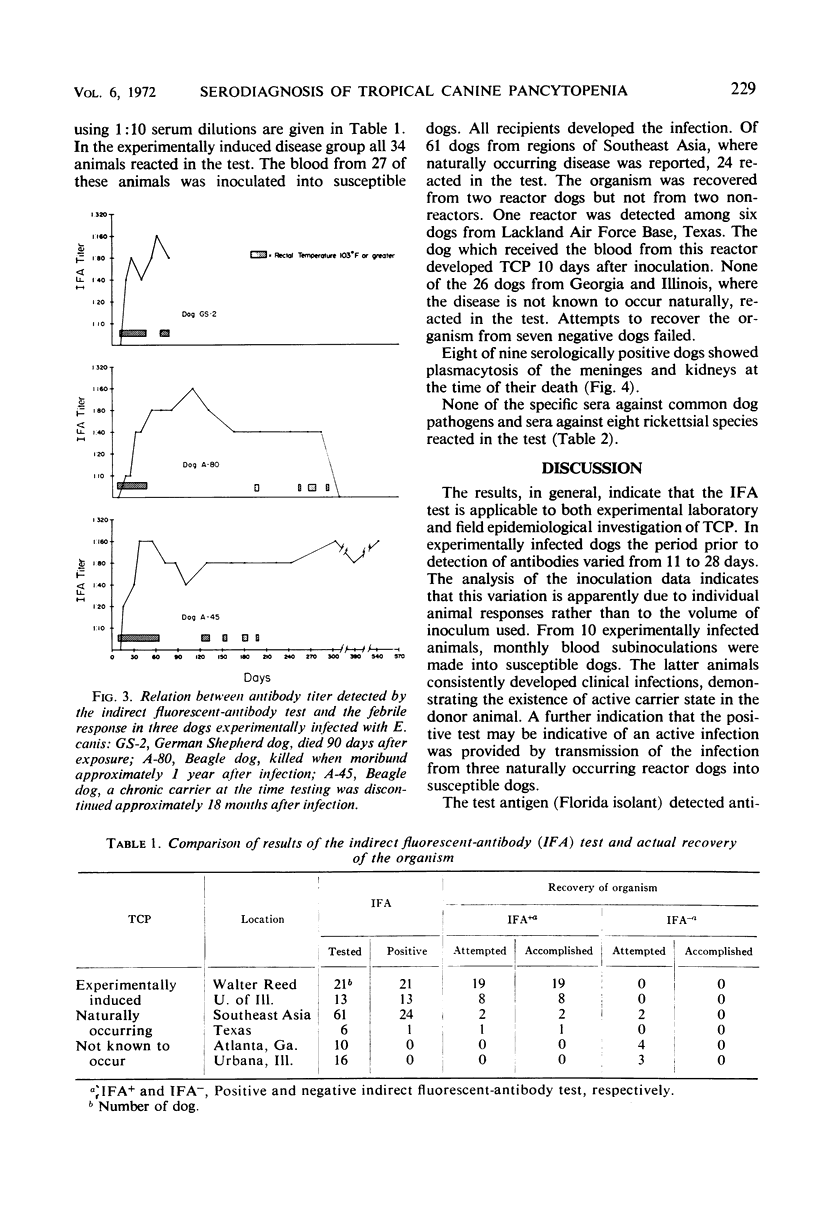
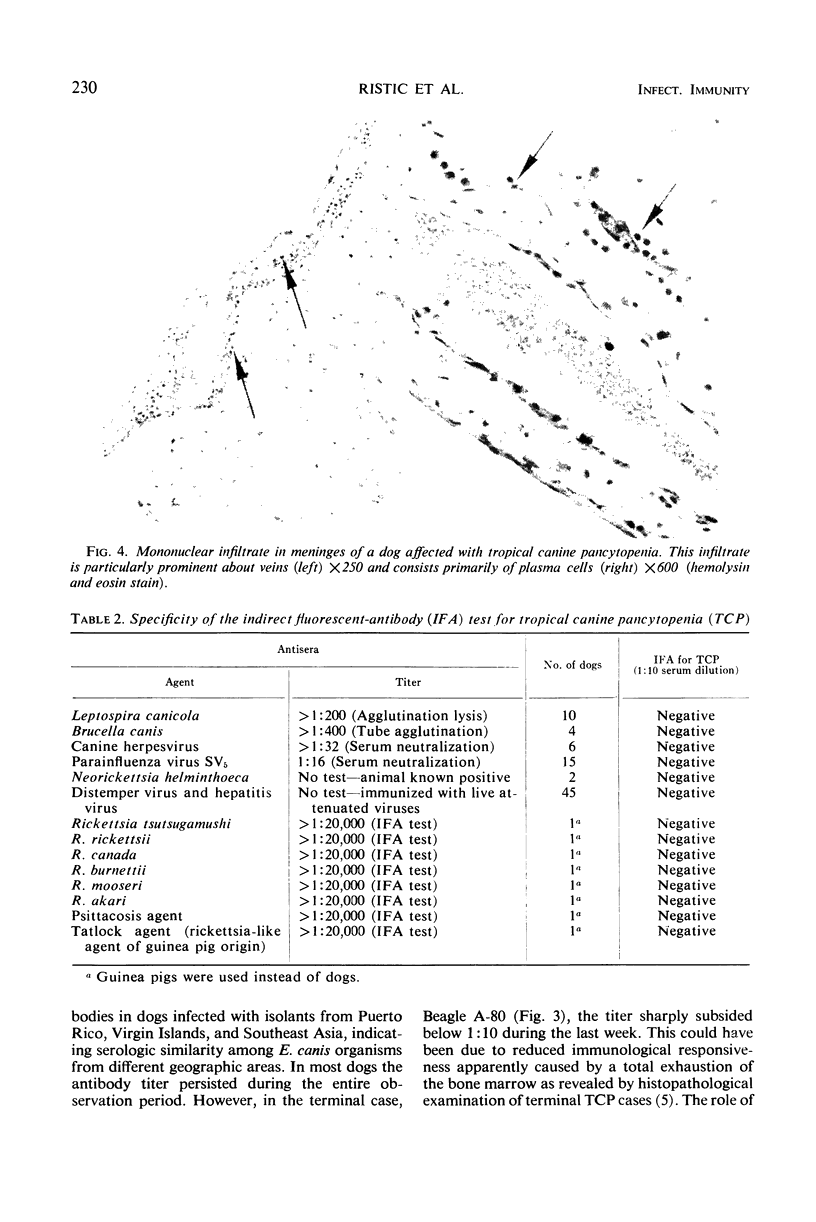
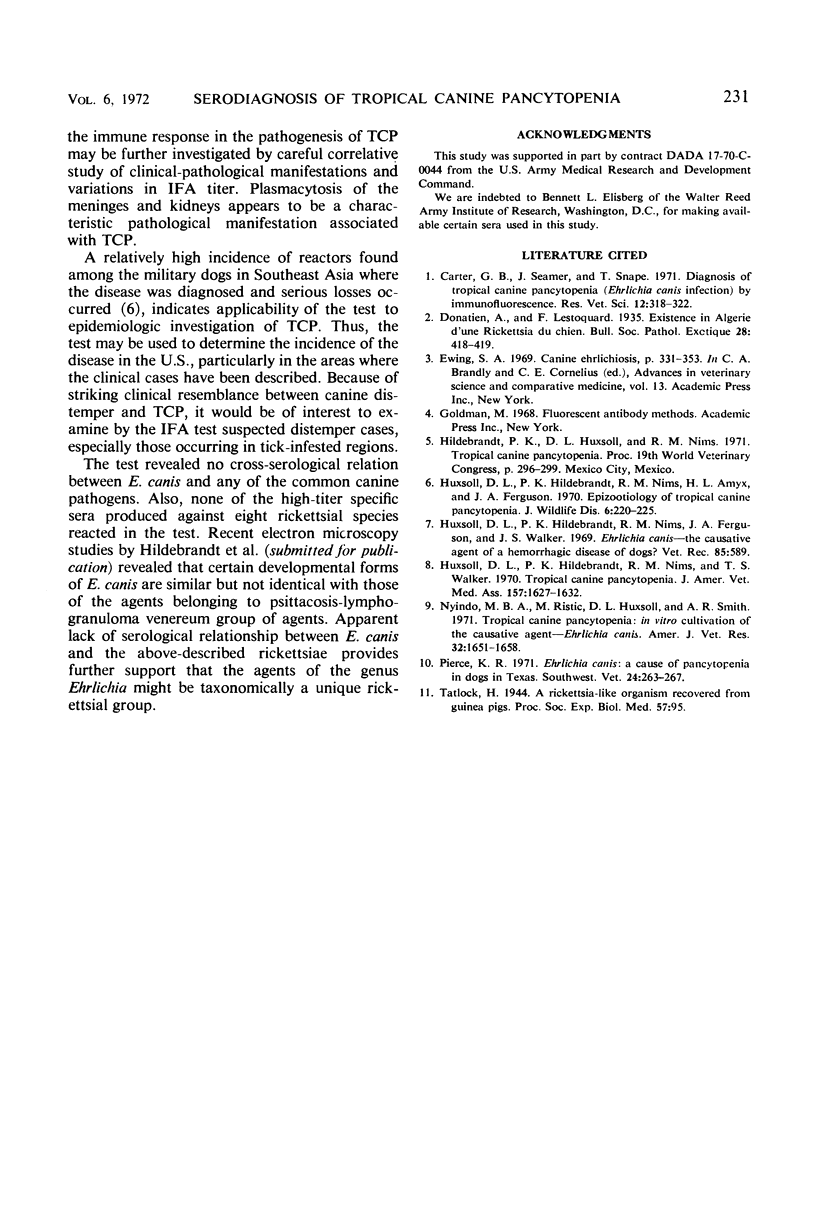
Images in this article
Selected References
These references are in PubMed. This may not be the complete list of references from this article.
- Carter G. B., Seamer J., Snape T. Diagnosis of tropical canine pancytopaenia (Ehrlichia canis infection) by immunofluorescence. Res Vet Sci. 1971 Jul;12(4):318–322. [PubMed] [Google Scholar]
- Ewing S. A. Canine ehrlichiosis. Adv Vet Sci Comp Med. 1969;13:331–353. [PubMed] [Google Scholar]
- Huxsoll D. L., Hildebrandt P. K., Nims R. M., Amyx H. L., Ferguson J. A. Epizootiology of tropical canine pancytopenia. J Wildl Dis. 1970 Oct;6(4):220–225. doi: 10.7589/0090-3558-6.4.220. [DOI] [PubMed] [Google Scholar]
- Huxsoll D. L., Hildebrandt P. K., Nims R. M., Walker J. S. Tropical canine pancytopenia. J Am Vet Med Assoc. 1970 Dec 1;157(11):1627–1632. [PubMed] [Google Scholar]
- Nyindo M. B., Ristic M., Huxsoll D. L., Smith A. R. Tropical canine pancytopenia: in vitro cultivation of the causative agent--Ehrlichia canis. Am J Vet Res. 1971 Nov;32(11):1651–1658. [PubMed] [Google Scholar]





